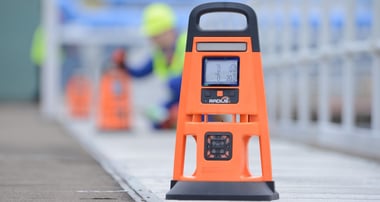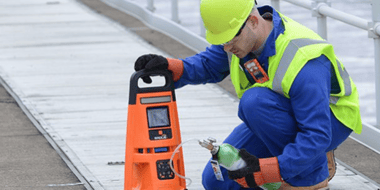If you work with chlorine (Cl2) or chlorine dioxide (ClO2), you’ve probably heard that gas detectors with these sensors are hard to maintain. This is a common myth.
So why all the angst when it comes to chlorine and chlorine dioxide?
This myth most likely originated in industries that have long used chlorine and chlorine dioxide – including pulp and paper, water treatment, and even some food and beverage manufacturers. Until the last decade, it was a major challenge to find a multi-gas monitor that could detect standard four gases (combustible, O2, CO, H2S) while also detecting Cl2 and ClO2. However, advancements in gas monitors mean there are now more devices that can detect all six gases at once, in both diffusion or pumped configurations. There are even cloud-connected monitors for chlorine detection with additional safety features like alarm sharing, live monitoring, and lone worker tracking.
Even though you now have access to multi-gas monitors that detect chlorine and chlorine dioxide, you can’t maintain them exactly the same as other sensors. But different doesn’t mean difficult. Both chlorine and chlorine dioxide sensors use slightly more gas for bump testing, and chlorine sensors use more gas than other sensors for calibration. However, when you routinely bump test and calibrate them, these sensors operate without a problem.
Chlorine dioxide sensors do require a special calibration process because chlorine dioxide is an anthropogenic gas, meaning it can’t be found naturally and you can’t order a cylinder of gas for calibration. You can calibrate chlorine dioxide sensors in your gas detectors one of two ways:
- Invest in a chlorine dioxide generator and calibrate the chlorine dioxide sensors yourself. If you have the time, budget, and expertise to handle everything in-house, a generator could be a good option. However, this approach requires diligence from your people – someone must ensure chlorine dioxide calibrations happen each month.
- Enroll in a program to have someone else calibrate your chlorine dioxide sensors. If you want to take a hands-off approach, there are programs that will take care of chlorine dioxide calibrations for you. With this approach, you receive a freshly-calibrated monitor each month and ship back your old monitor. A program like this can be added on to existing maintenance programs to eliminate all the pain of gas detector maintenance and repair.
It’s up to you which option works best for your gas detection program – the important thing is using and maintaining your monitors so you know when these hazardous gases are nearby – and you can do something about it.



